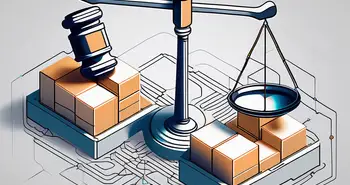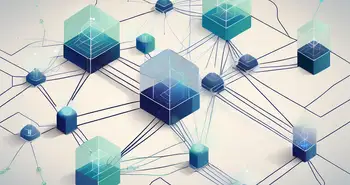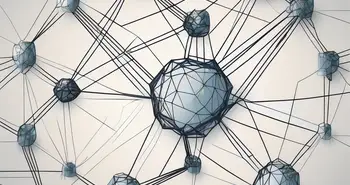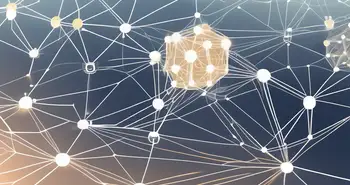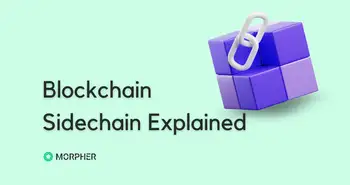Proof of Transfer (PoX): Enhancing Blockchain with Innovative Security

In the rapidly evolving world of blockchain technology, Proof of Transfer (PoX) has emerged as a groundbreaking consensus mechanism. If you're curious about PoX and its potential to revolutionize the way we secure and validate transactions, you've come to the right place. In this comprehensive guide, I'll take you on a journey through the fundamentals of PoX, its technical aspects, the benefits it offers, and the challenges it faces. By the end, you'll have a clear understanding of why PoX is such an exciting development in the blockchain space.
Understanding the Basics of Proof of Transfer (PoX)
What is Proof of Transfer (PoX)?
Proof of Transfer (PoX) is a consensus mechanism that combines the strengths of two well-known concepts: Proof of Work (PoW) and the transfer of value. In simple terms, PoX allows participants to mint new coins by proving they have burnt other valuable assets, typically from an existing blockchain. This introduces a novel way to secure a blockchain network while maintaining the decentralized nature of the technology.
Imagine a scenario where miners can validate transactions and secure a blockchain, not by solving complex mathematical puzzles (as in PoW), but by simply proving that they hold and have transferred existing assets. This innovative approach not only addresses the energy consumption concerns associated with PoW but also introduces a mechanism that ensures the fair distribution of rewards among participants.
The Importance of PoX in Blockchain Technology
The emergence of PoX in blockchain technology brings significant advantages to the table. One of the foremost benefits is the ability to leverage the security features of established blockchains without the need for excessive energy consumption. By empowering participants to prove the transfer of existing assets, PoX provides a more sustainable and environmentally friendly alternative to PoW without compromising on security.
Beyond sustainability, PoX also enhances the decentralization and trustworthiness of blockchain networks. It allows anyone with valuable assets to participate in securing a network, irrespective of their computational power. This opens new avenues for innovation and inclusivity and promotes a more democratic and resilient blockchain ecosystem.
How Does PoX Differ from Other Consensus Mechanisms?
PoX stands out from other consensus mechanisms, such as Proof of Stake (PoS) and Delegated Proof of Stake (DPoS), due to its unique approach. Unlike PoS and DPoS, which require participants to hold a certain amount of cryptocurrency to validate transactions, PoX allows users to prove ownership and transfer of valuable assets from an existing blockchain.
The use of transferable assets in PoX presents a distinct advantage over PoS and DPoS. It ensures a fair distribution of rewards among participants while also preventing centralization through the accumulation of substantial amounts of cryptocurrency. Additionally, PoX mitigates potential risks like the “nothing at stake” problem that can occur in PoS-based systems.
The Technical Aspects of Proof of Transfer
The Architecture of PoX
In PoX, the architecture revolves around the transfer of valuable assets. Participants provide proof of their ownership by burning these assets, thus generating the right to mine new coins on the PoX blockchain. The transfer and proof process are designed to be secure, transparent, and resistant to manipulation.
To ensure the integrity of the system, PoX employs cryptographic mechanisms to verify the transfer and proof of assets. This prevents double spending, manipulation, or fraudulent activity, making PoX a robust and reliable consensus mechanism.
The Role of Miners and Stackers in PoX
In a PoX network, participants take on different roles to secure the blockchain and earn rewards.
The first role is that of miners, who are responsible for validating transactions and creating new blocks. Miners prove their ownership by burning valuable assets, and in return, they are eligible to mine new coins on the PoX network.
The second role is that of stackers. Stackers do not participate in transaction validation but provide liquidity and collateral for the underlying assets. By staking their assets, stackers ensure the availability and transferability of valuable assets within the PoX network.
Understanding the PoX Mining Process
The mining process in PoX involves a series of steps to ensure the security and consensus of the blockchain.
First, miners select a set of valuable assets to prove the transfer. By burning these assets, miners demonstrate their ownership and eligibility to mine new coins.
Once the transfer is verified, miners can begin validating transactions and creating new blocks. The security of the network depends on the computational power contributed by miners and the integrity of their proof of transfer.
Successful miners are rewarded with newly minted coins, which they can use or stake as collateral. This incentivizes active participation while also promoting the distribution of coins throughout the network.
The Benefits of Using Proof of Transfer
Security Advantages of PoX
One of the key advantages of PoX is its enhanced security features. By combining proven cryptographic mechanisms with the transfer of valuable assets, PoX ensures a high level of resistance to attacks, fraudulent activities, and double spending.
The use of assets from an existing blockchain adds an additional layer of trust to the PoX network. It leverages the security infrastructure and consensus mechanisms already established, providing participants with a robust framework to secure their transactions.
Efficiency and Scalability in PoX
PoX offers remarkable efficiency and scalability compared to traditional consensus mechanisms like PoW. By removing the need for intensive computational tasks, PoX significantly reduces energy consumption and transaction validation times, leading to faster and more scalable blockchain networks.
The efficiency gains of PoX make it a viable solution for various applications, including financial systems, supply chain management, and decentralized applications (dApps). It enables seamless and rapid transaction processing while minimizing network congestion and associated costs.
Economic Incentives in the PoX Model
The economic incentives provided by PoX are a driving force behind its growing popularity. Participants are rewarded based on their proof of transfer and the computational power they contribute to the network. This incentivizes active participation, ensures the security and stability of the blockchain, and encourages the fair distribution of rewards.
The innate economic benefits of PoX create a self-sustaining ecosystem where participants are motivated to maintain the integrity and trustworthiness of the network. This aligns the interests of all stakeholders and fosters a healthy and thriving blockchain community.
Challenges and Solutions in Proof of Transfer
Common Issues in PoX Implementation
Although PoX offers numerous advantages, it also faces certain challenges that warrant attention.
One common issue is the need for efficient asset transfer mechanisms. Ensuring the secure and verifiable transfer of valuable assets from one blockchain to another poses technical challenges that require careful consideration and innovative solutions.
Another challenge is the development of robust protocols and guidelines for the smooth functioning of PoX networks. A clear framework that defines the roles, responsibilities, and interactions of miners and stackers is essential to maintain the integrity and fairness of the system.
Addressing the Challenges in PoX
Addressing the challenges in PoX implementation requires collaborative efforts from developers, researchers, and participants alike.
Ongoing research and development of asset transfer protocols are crucial to establish efficient and secure mechanisms for PoX networks. By leveraging the latest advancements in cryptography and blockchain technology, we can overcome existing limitations and unlock the full potential of PoX.
Additionally, the establishment of standards and guidelines for PoX participants, along with continuous testing and iteration, will ensure the smooth operation and stability of PoX networks.
Future Developments in PoX Technology
As blockchain technology continues to evolve, PoX is poised to see further advancements and improvements.
Future developments may include enhanced asset interoperability, expanded asset selection for proof of transfer, and the integration of PoX with other consensus mechanisms to create hybrid models that combine the strengths of multiple approaches.
Driven by the collective efforts of blockchain enthusiasts and industry experts, we can expect many exciting innovations in PoX technology in the coming years.
FAQ
What is Proof of Transfer (PoX)?
Proof of Transfer (PoX) is a consensus mechanism that combines the strengths of existing blockchains with the transfer of valuable assets. It allows participants to mint new coins by proving they have burnt assets from an established blockchain.
How does PoX differ from other consensus mechanisms?
PoX distinguishes itself from other consensus mechanisms by leveraging the transfer and proof of valuable assets instead of computational power or cryptocurrency holdings. It provides a more energy-efficient, fair, and decentralized alternative.
What are the benefits of using Proof of Transfer?
PoX offers enhanced security, improved efficiency and scalability, and economic incentives for network participants. It allows for a more sustainable and environmentally friendly approach to blockchain consensus, while also ensuring the fair distribution of rewards.
What are the challenges in Proof of Transfer implementation?
Challenges in PoX implementation include efficient asset transfer mechanisms and the development of robust protocols. Addressing these challenges requires ongoing research, the establishment of standards, and continuous testing.
What can we expect in the future of PoX technology?
Future developments in PoX technology may include enhanced asset interoperability, broader asset selection, and integration with other consensus mechanisms. The collective efforts of blockchain enthusiasts and experts will drive innovation and advancement in PoX.
In conclusion, Proof of Transfer (PoX) marks an exciting milestone in the world of blockchain technology. Its innovative approach combines the security of established blockchains with the transfer of valuable assets, resulting in a more sustainable, efficient, and inclusive consensus mechanism. As PoX continues to evolve, we can expect even greater advancements and applications that will shape the future of decentralized systems.
As you contemplate the future of blockchain and the innovative Proof of Transfer (PoX) technology, consider taking your trading experience to the next level with Morpher. Embrace a platform that embodies the spirit of blockchain's evolution, offering zero fees, infinite liquidity, and the freedom to trade across a multitude of asset classes. With Morpher, you can leverage up to 10x on trades, engage in fractional investing, and enjoy the safety of a non-custodial wallet. Sign Up and Get Your Free Sign Up Bonus today to join a community that's reshaping the world of investing through blockchain innovation.

Disclaimer: All investments involve risk, and the past performance of a security, industry, sector, market, financial product, trading strategy, or individual’s trading does not guarantee future results or returns. Investors are fully responsible for any investment decisions they make. Such decisions should be based solely on an evaluation of their financial circumstances, investment objectives, risk tolerance, and liquidity needs. This post does not constitute investment advice.

Painless trading for everyone
Hundreds of markets all in one place - Apple, Bitcoin, Gold, Watches, NFTs, Sneakers and so much more.

Painless trading for everyone
Hundreds of markets all in one place - Apple, Bitcoin, Gold, Watches, NFTs, Sneakers and so much more.



